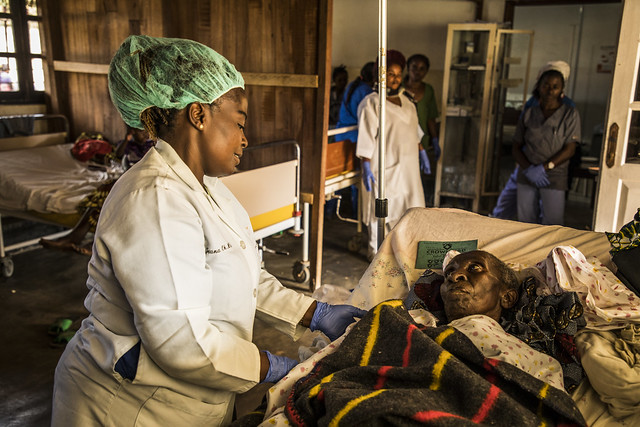4 Facts About Health Care in the Democratic Republic of the Congo

The Democratic Republic of the Congo (DRC), once lauded for its health care system, is now a country with a lack of resources and access. In the past few decades, the DRC has experienced political unrest, war and military disputes, leaving the country’s health care system in shambles. Now, almost 70 percent of Congolese people have little or no access to basic health care. Here are the top four facts about health care in the Democratic Republic of the Congo:
Top 4 Facts About Health Care in the Democratic Republic of the Congo
- Hospitals- As of 2016, there were 401 hospitals in the DRC. Despite this, access to medical care remains sparse in rural areas. In fact, it is still difficult for many citizens to obtain necessary medical aid. Additionally, these hospitals often lack proper equipment and staff to meet some of the needs of the patients. Many times, hospitals run out of essential medicines and supplies required for various treatments. Multiple organizations recognize the gravity of this situation and are reaching out to help. This includes a health program from USAID, which provides more than 12 million citizens of the DRC with primary health care services.
- Vaccines- In 2018, The Emergency Plan for the Revitalization of Immunization was implemented with the goal of increasing vaccinations for children in the Democratic Republic of the Congo. This plan is also known as the Mashako plan, in honor of the DRC’s former minister of health, Professor Leonard Mashako Mamba. The goal of the Mashako plan is to increase the coverage of children vaccinated by 15 percent by 2020. This means that, under the Mashako plan, 220,000 children who would otherwise be susceptible to life-threatening, preventable diseases will now have access to vaccines.
- Health Care Workers- The number of health care workers in the DRC averages out to .09 physicians to 1,000 individuals. This is drastically less than many other countries, such as the United States with almost 3 physicians per 1,000 individuals. Additionally, there are more than 4 physicians to 1,000 individuals in Italy. Furthermore, one-third of health care workers are over 60 years old. These numbers are odd and surprising, considering the country produces up to 9,000 new health care workers each year. Despite this, there is a significant shortage of health care workers in many areas and facilities in the DRC. This is due to a lack of proper record keeping. In recent years, however, the DRC has been working with IntraHealth International to implement iHRIS. This program aims to aid the country in recording and managing data pertaining to the health care workforce. The goal of iHRIS is to help record missing information and better disperse doctors throughout the DRC.
- Government Spending- The Government of the DRC (GRDC) has recently given more attention to health care and is making the health of its citizens a higher priority. In 2015, the government increased health care spending to almost 9 percent of the overall budget, in comparison to 3.4 percent in 2011. Also in 2015, and for the very first time, the GRDC reserved funds specifically for drugs and contraceptives, which are crucial for various parts of the population. Despite these improvements, government spending on health care in the DRC continues to be among the lowest in the world.
Over time, recent government changes and shifting priorities are making significant and notable improvements to the health care system in the DRC. These top four facts about health care in the Democratic Republic of the Congo demonstrate that access to health care is critical in both citizens and the country’s future.
– Melissa Quist
Photo: Flickr
